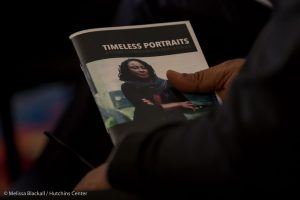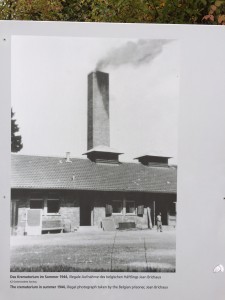The video tour is animated! Authoritative! And responses roll in from Nova Scotia to Argentina, Romania to Thailand. Congratulations, everyone. I have some photos from the opening party, posting soon.
Purple Spring
A Time Like This: Music for Change at Carnegie Hall
On March 11 young artist Noga Cabo (seen at the end of this post) performed her piece, “Stephen Said!” about scientist Stephen Hawking, who died three days later, on March 14. Here is a feature about Noga with excerpts of the song. — B.P.
From time to time I’ve attended celebrations in Carnegie Hall’s education wing, where the young participants including at risk youth in the Weill Music Institute songwriting program present their new material. Every student sings an original song with a back-up band. I can feel how the faculty has effectively nudged key phrases, word dumps and free verse into songs with beginnings, middles and ends. Creativity takes shape. The performances can be passionate.

Yesterday, March 11, the project scaled up – way up – with a concert featuring student and professional vocalists, the magnificent Wadleigh High School Choir and Songs of Solomon inspirational ensemble, the A Time Like This Band, Future Music Project Ensemble, Free Verse Poets and more. Images, patterns and colors played on the walls. Hats off to conductor Kenny Seymour at the keyboard. He arranged and orchestrated every piece. To watch him is to know what’s going on. Continue reading A Time Like This: Music for Change at Carnegie Hall
Timeless Portraits : Saturday at Harvard, honoring Geri Allen
After a long Friday night concert (the SATURDAY night concert is here don’t miss it), people came for second day of the panels, beginning with Geri Allen as Scholar and Educator. Ingrid Monson moderated.

Mount Allen III is Director of Operations at SFJAZZ in San Francisco. He described “Geri and Mount Allen’s Scheme for World Domination through Global Literacy” – strategizing to synch up performers in distant studios and deliver a concert to audiences at minority-serving institutions. He calls it “the new underground railroad.” Geri was on board; she always wanted to bring opportunity to African-American students. High tech/low tech: she also loved working with tap dancers. As Michael Heller, her colleague at the University of Pittsburgh, said “Geri could track so many things at once.” Together Allen and Heller acquired and processed the Erroll Garner Collection for U Pitt. Heller and colleague Aaron Johnson described Geri as a motivator. “She roped people in to doing things,” said Johnson. “She would make you speak your intentions,” said Heller, and then publicly restate them on your behalf. Saxophonist Yoko Suzuki was a fellow teacher and close colleague who described Allen as “inclusive, accessible . . . . She broke down music into parts.” Johnson chimed in “No graduate student left behind.”
Allen also created the summer jazz camp for girls at Montclair State University in New Jersey; it continues at NJPAC in Newark.

The Working with Geri Allen panel sat in a sunbeam! I think this photo shows bassist Kenny Davis telling us how he gave Geri a Zoom recorder to replace an ancient cassette device. It was as though “… I bought her a Porsche!” Carmen Lundy played a personal video compiled from phone-captured “footage” of Carmen, Geri and others traveling in Europe. For a moment we heard Geri speak, standing at the foot of Montmartre, commenting on Paris. Beautiful seat-of-the-pants production, Carmen! Citing “Drummer’s Song” (Open on All Sides in the Middle from 1987, Twenty-One from 1994), Terri Lyne Carrington noted Allen’s “layering of phrases so you don’t get tired” — “we became a band that’s real stretchy” in drummer Kassa Overall’s words — and described her music as having “the beauty of a rose and the aggression of a tornado.”

As a panelist for Geri Allen’s Place in History, Don Byron’s description of Tower Records on lower Broadway in the mid 1980s was accurate. The low-ceilinged jazz department, the politics of how LPs were sorted and filed, the knowledgeable salespeople, the stress when they put your album in the wrong bin. That’s the era in which Allen and Byron made their New York entrances. (Both eventually moved elsewhere.) The two are on the soundtrack to the 1996 film Kansas City and, coincidentally, share a 2004 NYT review of Byron’s Ivey-Divey (Blue Note) and Allen’s The Life of a Song (Telarc). Allen recorded on the Blue Note, Verve, Telarc and Motéma labels.
In 2013 and 2016, Allen musically directed two stage productions, “Celebrating the Great Jazz Women of the Apollo” and “A Conversation with Mary Lou Williams.” She asked actress S. Epatha Merkerson of Law and Order to direct the shows and Farah Jasmine Griffin to write. On the closing panel, Merkerson spoke of how the three brainstormed to develop scripts and staging, how Geri loved to incorporate new performers – an organist, a dancer – at the last minute, how working with Allen diversified Merkerson’s career. Allen’s long-time manager Ora Harris, saxophonist Tia Fuller, Carrington and Lundy completed this discussion. After dinner came the Geri Allen Tribute concert. The panelists became performers, and there’s a video on the WGBH Facebook page, here. Go see it! Below is the set list; neither songs nor performers are named from the stage. The music speaks.

Geri Allen was born and raised in Detroit. She graduated from Howard University and earned her Master’s in Ethnomusicology from the University of Pittsburgh. She wrote her thesis about Eric Dolphy, and her composition “Dolphy’s Dance” is on the above list. She composed from life. Allen had three children who are ever-present in her music. She led or played on at least 50 albums with several generations of artists. She performed internationally on esteemed stages. She actively sought to play for children, older people, people at church. I wish we had more documentation of her in these community situations.
But I don’t want to wish, I want to pivot the narrative now and in the future. As Farah Jasmine Griffin challenged us in her keynote speech, it’s possible to “Imagine a story of jazz in which Geri is central from now on.” We should, we can and I hope we will.
Timeless Portraits : Friday

We who love contemporary jazz have been mourning the death of Geri Allen (1958-2018). Yet Geri Allen was always emerging, adding new dimensions. And it’s still true. Earlier this month at Harvard University, a free and open festival/symposium entitled Timeless Portraits gave time and space to celebrate her music, life, spirit and legacy. My friend Ingrid Monson was a conference organizer and I happily attended.
Keynote speaker Farah Jasmine Griffin, scholar and Columbia University Professor, wrote the notes for Allen’s Flying Toward the Sound solo piano album (Motéma 2010). The visual artwork came from Carrie Mae Weems who – later in the day, accompanied by Esperanza Spalding on bass and Terri Lyne Carrington on drums – presented her still images and video of Geri. Flight is a metaphor for freedom, Griffin said. “Where Geri led, love and beauty followed.”
Panelists Jason Moran, Craig Taborn, Kris Davis and Vijay Iyer (left to right) addressed the topic of Geri Allen and the Piano. My notes contain their confessions – “I am fully influenced by,” “very directly,” “I have plagiarized” – and descriptive phrases for musical selections that they played for us – “as though she has three hands!” “flip[s] a phrase,” “wastes no time,” “she’s dancing!”
Excerpted at this panel: “Lonely Woman” from Etudes (Charlie Haydn, Paul Motian, Allen, Soul Note 1987), “Wanna Be Startin’ Something” from Allen’s Grand River Crossings (Motéma 2012), “Skin” from Twylight (Minor Music 1989).
At the night-time concert in Paine Hall, each pianist played alone and in duets with the other three. Practically no words were spoken. Jason Moran’s unbound interpretation of “Life Every Voice and Sing” made me think of war, of Syria. Of how Geri Allen – so self-possessed – made emotional and powerful music. Kris Davis and Craig Taborn concluded with Davis’s transcription of “Black Man” ( from Home Grown 1985). On paper Davis uses three staves, as though Allen is playing with three hands. “You hear her hands,” Vijay Iyer said, “… hear that mind at work” in Taborn’s phrase.
I do not have the Friday night set list. And the sequence of pianists alone then in duets is a brain teaser. Please, someone, send it! I will share.
In the next post, I’ll start with Saturday, February 17, 8:30am, the Symposium, Geri Allen as Scholar and Educator.
A Geri Allen discography is here.
Timeless Portraits : Honoring Geri Allen
Members of Geri’s community gathered at Harvard University to appreciate her as pianist and collaborator, scholar and educator, visionary and historical figure and more. The symposium agenda is here.
The Friday night concert, Pianos for Geri, featured four players, one and two at a time. Voices and instruments expanded the sound on Saturday for Geri: Genus, Grace and Fire. Set lists to come.
Great thanks to organizer Ingrid Monson and her colleagues – Terri Lyne Carrington, Vijay Iyer, Esperanza Spalding – and all who participated.
I’ll share some notes soon.
My report about Gender and Identity in Jazz at the Jazzinstitut Darmstadt is now online at downbeat.com
It’s posted, as of last week, with this photo …
Wolfram Knauer directs the Jazzinstitut Darmstadt, and Sherrie Tucker is American Studies Professor, University of Kansas. Happily, they opened the conference. I love these additional photos, also by Wilfried Heckmann.
Viewing this image, Martin Niederauer (Male Hegemony in Jazz) explained his gesture: “…[C]ompeting against each other and trying to establish hierarchies does not push the competitors away from each other. Rather, they are getting closer and are tied to each other.” Martin is a scholar at University of Music and Performing Arts Vienna, Institute for Music Sociology.
Based at the University of Pittsburgh, Yoko Suzuki has interviewed dozens of women – especially saxophonists – about their New York jam session experiences. Yoko delivered some conclusions from her research, then she jammed in the ancient, lovely stone cellar below the Jazzinstitut, the largest public jazz collection in Europe.
You can see Wilfried Heckmann’s jazz photography at Jazz-vision.de. And read the full downbeat.com story here.
Here’s my parting shot of an office in the library. I like the vibe.

And note this: TODAY Oct 26 is the release date of the complete Life and Art of Jutta Hipp from Be! Jazz Records (Germany). Thanks to presenter and saxophonist Ilona Haberkamp, who teaches at Ernst-Barlach-Gymnasium, Castrop-Rauxel, for her dedicated work about pianist JH, who would be 90 this year.
Two photos for Sophia
Dachau visit

There is a detailed museum. One can see photos and read names and synopses of individual prisoners — Jewish, Polish, some Spanish civil war fighters who then fought in Germany, Czechs, Hungarians, the nameless Russian prisoners of war. priests, Jehovah’s witnesses. Men were imprisoned there, not women. Eventually thousands upon thousands of prisoners of both sexes, all nationalities including Dutch, were sent into factories to work as slaves — BMW and Agfa included, also Zeppelin. FInally the liberation came on April 29-May 1, 1945. Upon entry Americans documented the scene by taking color motion pictures, and later forced the townspeople to walk through the camp. Most of the barracks are gone, just rectangles in the ground now. Ten meters x 100 meters. In orderly rows. Built originally to hold 6,000 but at the end held so many more that I can’t remember the scale. Diabolical, recent and bitter
We happened upon a 360-degree Michael Jackson memorial
At dusk in a narrow park around the base of a statue, all the photos, talismans, flowers seem fresh. No soundtrack, just the trolley, pedestrians, some tourists. Here are two sides of four.














